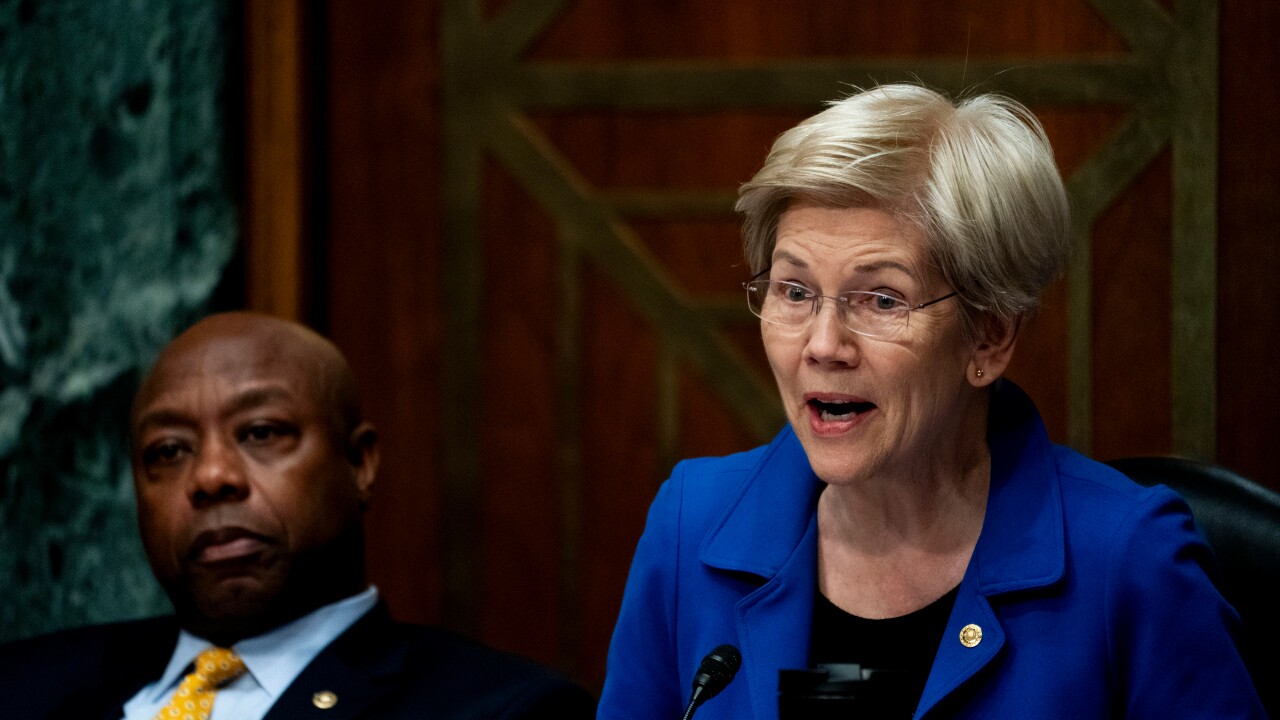-
The debate about how big a bank needs to be before it poses a threat to the economy heated up again Thursday as lawmakers battled over the $50 billion threshold imposed by the Dodd-Frank Act.
July 23 -
Just a day after the Dodd-Frank Act's fifth anniversary, Senate Banking Committee Chairman Richard Shelby launched a new attempt to make significant changes to the law, attaching his regulatory relief bill to legislation that would provide funding for financial services agencies.
July 22
WASHINGTON Tough new regulatory requirements for regional banks exceeding $50 billion in assets are costly, but much of that toll would remain even if Congress changed the asset threshold, according to a
The paper by Federal Financial Analytics said the heightened rules could cost a combined $2 billion annually for 20 regional players included in the report. Tougher standards for those institutions could also reduce lending by $14 billion to $20 billion over a five-year period and push more business to the unregulated shadow banking sector, the report said.
But the paper, which was underwritten by the Regional Bank Coalition, also acknowledged that many of those requirements would remain in place even if Congress were to raise the $50 billion asset threshold.
"Eliminating statutory requirements for many systemic standards would have minimal effect on applicable prudential and resolution standards," the paper said. "Regional [bank holding companies] are already subject to stringent stress testing, resolution-planning, credit-exposure limits, and risk-management standards. Federal and state regulators also have extensive powers to sanction individual banking organizations without resort to systemic regulation. "
Still, Karen Shaw Petrou, the managing partner of the analytics firm, said that raising the limit as lawmakers have proposed in regulatory relief packages currently being debated would clearly have an impact.
"It's a qualitative difference because it would give more flexibility to the agencies," Petrou said in an interview. "Some of the costs would remain, but there would be fewer arbitrary thresholds imposed without regard to the activities of these BHCs or their size."
At issue is the $50 billion asset threshold that was enacted as part of the Dodd-Frank Act. The law imposed more stringent regulatory standards for banks over that size when it comes to stress tests, capital and liquidity. Although the financial reform law gives regulators leeway in how to apply those standards, regional banks have been urging lawmakers to rework the threshold, arguing it is too low.
The report is likely to be used by the Regional Bank Coalition as it lobbies Congress on the issue. A bill by Senate Banking Committee Chairman Richard Shelby would increase the limit to $500 billion while allowing regulators to individually designate firms between $50 billion and the new threshold. The legislation has passed the banking panel and is included in a separate Appropriations Committee bill, but has not yet been brought before the full Senate.
William Moore, executive director of the regional bank group, said banks might not recoup all the costs from the statutory limit if it were to be raised, but any gain would be worthwhile.
"Obviously there will be some reduction in compliance costs," he said. "Will it be the full $2 billion? I don't know, but it will be a substantial number."
But reform advocates contend a change in the law is unnecessary, arguing that regulators are free to lighten the load on smaller regional bank holding companies if they deem it appropriate.
"I don't think the number constrains regulators that much," said Marcus Stanley, the policy director of Americans for Financial Reform. "If regulators want to ease up on banks between $50 billion to $150 billion, they can do it, even if the number doesn't change."
The Federal Financial Analytics paper warns, however, that the statutory limit could be making the system riskier. For one thing, the requirements, which include higher capital levels for banks above the cutoff, could discourage a healthy regional bank from acquiring a weaker one because it would necessitate even more capital. That could drive up failures and put more pressure on the Federal Deposit Insurance Corp.
"The less capacity there is in the regional BHC sector to acquire a weak regional BHC, the greater the odds of a FDIC rescue," Petrou said.
The paper also said that the higher costs and decrease in lending by regional banks could push consumers to unregulated institutions.
"People forget that the regional BHCs are in exactly the same markets," Petrou said. "If they can't compete in the regional market, their markets become even more prime pickings for nonbank providers exempt from these costly regulations."
The paper says that the system could be at risk as a result.
"If banks exit traditional lending and deposit-taking services due to unnecessary regulatory cost, then markets may be underserved and increasingly vulnerable to higher-risk, higher-priced offerings that raise consumer protection and market stability risk," it says.
But Dennis Kelleher, the president of Better Markets, said that is not a reason to raise the threshold. Instead, policymakers should focus on ensuring all financial players follow the same rules.
"There should be no such thing as an unregulated shadow banking system," Kelleher said. "There should be a regulated finance system where banks and nonbanks are all regulated appropriately tailored to their risk."
Even if there are additional costs faced by regional banks from the $50 billion threshold, he said, those pale in comparison to what would happen if there is another financial crisis.
"There is no question that there are going to be costs associated with regulation," he said. "But would you rather pay a little more now for the price of regulation or lots later in a financial crash? Because those are the only two choices."





